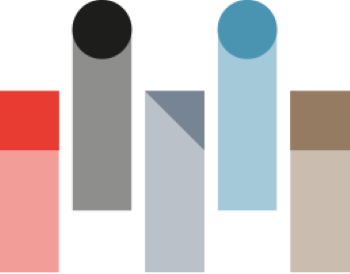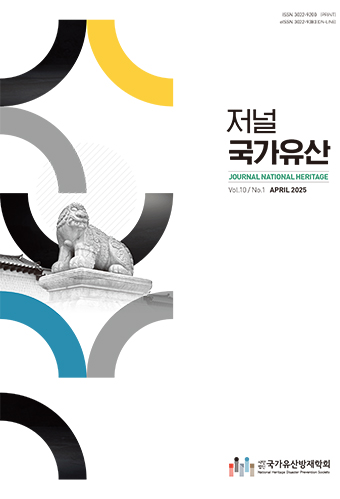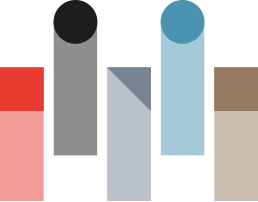Article
Abstract
References
Information
Detecting the displacement of cultural heritage is essential for protecting and managing their prosperity. However, because the degree of displacement that humans can detect with the naked eye is limited and requires a lot of time and manpower, various studies are being conducted to detect the displacement and damage of cultural heritages using Deep Learning technology. In previous studies, 10 pre-trained Deep Learning neural network models through transfer learning techniques and Convolutional Neural Network (CNN) which are known for excellent for image processing were used to detect inclination in the roof of Heunginjimun. After learning to classify the images of Heunginjimun into two categories, normal and abnormal, we measured the prediction accuracy of the models generated in nine environments, classified according to season and weather. After analysis, it was raised to over 95% through hyper-parameter adjustment. In this study, among the 10 pre-trained Deep Learning Neural Network models used in previous studies, the Neural Network model with the highest accuracy was selected as the optimal model through performance verification, and then it was used to integrate 9 single environments into multiple ones. As a result, by adjusting the hyper-parameter of models below 95% in prediction accuracy, we were able to raise it above the previous percentage. Consequently, we selected the Efficientnet_v2_s model, which had the highest accuracy, to conduct an environment integration experiment. As a result, after running the learning and verifying performance in an environment that integrated all nine single environments, the roof inclination was successfully detected in all environments with an accuracy of 99.84%.
문화재의 변위를 탐지하는 것은 문화재를 보호 및 관리하기 위해 반드시 필요한 일이나 사람이 육안으로 직접 탐지할 수 있는 변위는 제한적이고 많은 시간과 인력이 요구된다. 따라서 딥러닝 기술을 활용해 문화재의 변위 및 손상을 자동으로 탐지할 수 있는 다양한 연구들이 진행되고 있다. 이전 연구에서 흥인지문 지붕부의 변위 탐지를 위해 이미지 처리에 탁월한 CNN과 전이 학습 기법을 통해 사전에 학습된 딥러닝 신경망 모델 10개를 활용하여 흥인지문의 이미지를 정상과 비정상 두 가지로 분류되도록 학습시킨 후 계절과 날씨에 따라 분류한 9개의 환경에서 생성된 모델의 예측 정확도를 향상시키는 연구를 진행한 바 있다. 그 결과 정확도가 95% 미만으로 나오는 모델들을 대상으로 하이퍼 파라미터 조정을 통해 95% 이상으로 향상시킬 수 있었다. 본 연구에서는 이전 연구에서 사용했던 10개의 사전에 학습된 딥러닝 신경망 모델 중 성능 검증을 통해 정확도가 가장 높은 신경망 모델을 최적의 모델로 선정한 후 그 신경망 모델을 활용하여 9개의 단일환경을 여러 개로 통합하여 학습을 진행하는 환경통합 실험을 통해 환경별 통합에 따른 예측 정확도를 측정하고 결과를 분석한다. 신경망 모델 성능 검증 결과 정확도가 가장 높은 Efficientnet_v2_s 모델을 활용해 환경통합 실험을 진행했다. 그 결과 9개의 단일 환경을 모두 통합한 환경에서 학습을 진행한 후 성능을 검증한 결과 정확도가 99.84%로 나왔으며 모든 환경에서 성공적으로 지붕부의 변위를 탐지할 수 있음을 실험을 통해 알아낼 수 있었다.
- He, K., Zhang, X., Ren, S., Sun, J. (2016). “Deep residual learning for image recognition.” In Proceedings of the IEEE conference on computer vision and pattern recognition, pp.770-778. 10.1109/CVPR.2016.90
- Huang, G., Liu, Z., Van Der Maaten, L., Weinberger, K.Q. (2017). “Densely connected convolutional networks.” In Proceedings of the IEEE conference on computer vision and pattern recognition, pp.4700-4708. 10.1109/CVPR.2017.243
- Kang, S.J., Lee, S.Y. (2023). “A Study on Performance Lmprovement of Heunginjimun Roof Displacement Determination Model Using Artificial Intelligence Algorithm.” Summer Annual Conference of IEIE, pp.1050-1054.
- Krizhevsky, A., Sutskever, I., Hinton, G.E. (2017). “Imagenet classification with deep convolutional neural networks.” Communications of the ACM, Vol.60, No.6, pp.84-90. 10.1145/3065386
- Kwon, R. (2011.08.02). Partial damage to the Heunginjimun roof due to heavy rain. SBS NEWS. https://news.sbs.co.kr/news/endPage.do?news_id=N1000962627
- LeCun, Y., Boser, B., Denker, J.S., Henderson, D. et al. (1989). “Backpropagation applied to handwritten zip code recognition.” Neural computation, Vol.1, No.4, pp.541-551. 10.1162/neco.1989.1.4.541
- Lee, S.Y., Cho, H.H., Lee, D.G. (2023). “Heunginjimun Displacement Determination Using Artificial Intelligence Algorithm.” Workshop on Image Processing and Image Understanding, pp.1-26.
- Lee, S.Y., Park, J.W. (2022). “Ensemble Deep Learning Model for Prediction of Tilt Displacement forImmovable Cultural Heritage.” Summer Annual Conference of IEIE, pp.1397-1398.
- Ma, N., Zhang, X., Zheng, H.T., Sun, J. (2018). “Shufflenet v2: Practical guidelines for efficient cnn architecture design.” In Proceedings of the European conference on computer vision (ECCV), pp.116-131. 10.1007/978-3-030-01264-9_8
- Park, J.W., Lee, S.Y. (2022). “Detection of Displacement in Wooden Cultural PropertiesUsing f-AnoGAN Model.” Summer Annual Conference of IEIE, pp.1379-1380.
- Ruder, S. (2016). “An overview of gradient descent optimization algorithms.” arXiv preprint arXiv:1609.04747.
- Sandler, M., Howard, A., Zhu, M., Zhmoginov, A. et al. (2018). “Mobilenetv2: Inverted residuals and linear bottlenecks.” In Proceedings of the IEEE conference on computer vision and pattern recognition, pp.4510-4520. 10.1109/CVPR.2018.00474
- Selvaraju, R.R., Cogswell, M., Das, A., Vedantam, R. et al. (2017). “Grad-cam: Visual explanations from deep networks via gradient-based localization.” In Proceedings of the IEEE international conference on computer vision, pp.618-626. 10.1109/ICCV.2017.74
- Szegedy, C., Vanhoucke, V., Ioffe, S., Shlens, J. et al. (2016). “Rethinking the inception architecture for computer vision.” In Proceedings of the IEEE conference on computer vision and pattern recognition, pp.2818-2826. 10.1109/CVPR.2016.308
- Tan, M., Le, Q. (2019, May). “Efficientnet: Rethinking model scaling for convolutional neural networks.” In International conference on machine learning, pp.6105-6114, PMLR.
- Tan, M., Le, Q. (2021, July). “Efficientnetv2: Smaller models and faster training.” In International conference on machine learning, pp.10096-10106, PMLR.
- Tan, M., Chen, B., Pang, R., Vasudevan, V. et al. (2019). “Mnasnet: Platform-aware neural architecture search for mobile.” In Proceedings of the IEEE/CVF conference on computer vision and pattern recognition, pp.2820-2828. 10.1109/CVPR.2019.00293
- Wang, N., Zhao, X., Zou, Z., Zhao, P. et al. (2020). “Autonomous damage segmentation and measurement of glazed tiles in historic buildings via deep learning.” Computer-Aided Civil and Infrastructure Engineering, Vol.35, No.3, pp.277-291. 10.1111/mice.12488
- Publisher :National Heritage Disaster Prevention Society
- Publisher(Ko) :국가유산방재학회
- Journal Title :Journal of the Society of Cultural Heritage Disaster Prevention
- Journal Title(Ko) :문화재방재학회 논문집
- Volume : 8
- No :3
- Pages :167-179



 Journal National Heritage
Journal National Heritage




